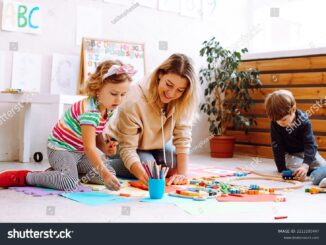
Homeschool Art Lesson
Homeschool Art Lesson Hi, this is Tracy Cheney for Expert Village, and we're learning about primary colors and secondary colors today. This is an experiment you can do right at your kitchen counter with the girls with food coloring, and we're going to use milk. One, because our world would be particularly white-hot without hue, we can also see it so much better than if we were using irrigate. So, our three primary colors, and this is why they come as color and everything else because you can mingle them yourself. The three primary colors of the Homeschool Art Lesson are yellowish, red-faced, and blue; now you have to memorize those. Now let's desegregate them and see what happens if I take the crimson and situate it into the yellow; what do you think will happen? We get orange, so there are the secondary colors right there. Alright, let's make blood-red and include the blue to it, and let's see what happens to this; I speculate I'll wait on that one.
I guess I'll exit this lane, ah, we'll depart this nature. So, yellowish and the blue fix green, and now let's do blue and cherry-red, we'll get the darkest color now, and we get the violet. So, it's like trickery; we've gone from the primary color of ruby-red, yellow-bellied, and off-color to the secondary colors orange, green, and violet. Alright, we're talking about primary colors again. Here's our red, our yellow-bellied, and our blue. You can do this homeschool art lesson with cellophane. You can keep the two colors together and hold it up to the light-colored, and they can see how these two things work together. So, here we have the cherry-red and the blue together, clearing purple, and if you did it with colored cellophane, they could see this very clearly and adoration impounding it up and playing with it. The cherry-red and the yellowish compel orange and then put the yellow and the blue together, and we get dark-green, alright, and again we get the violet the homeschool art lesson is complete. Apparent, simple nature to see how primary color draws the secondary and that's what reaches up countries around the world, all these colorings.
As found on Youtube








